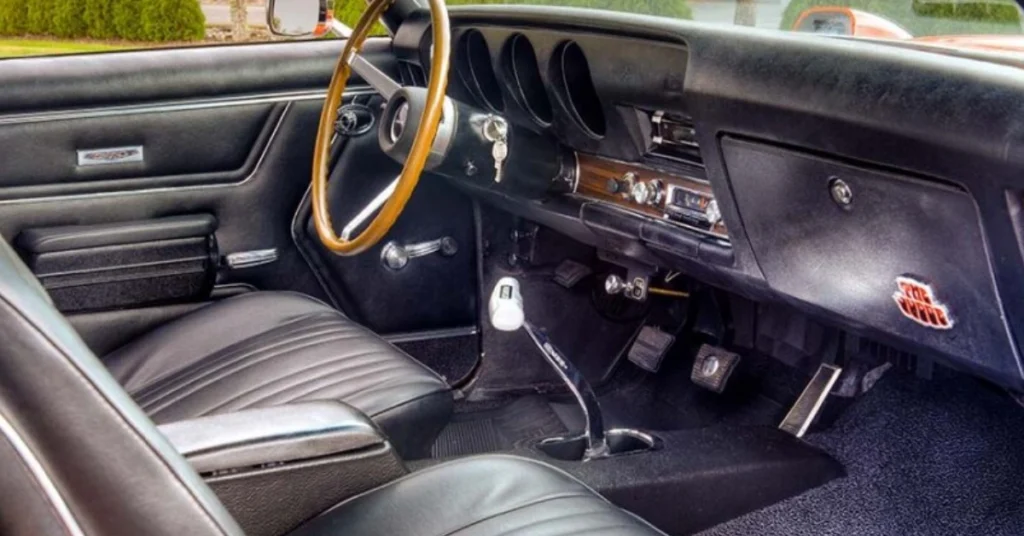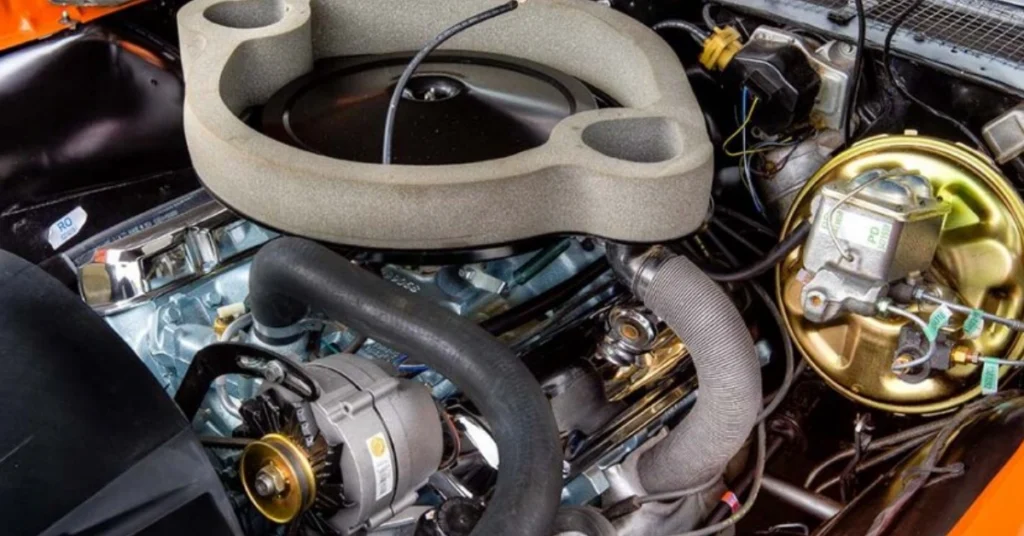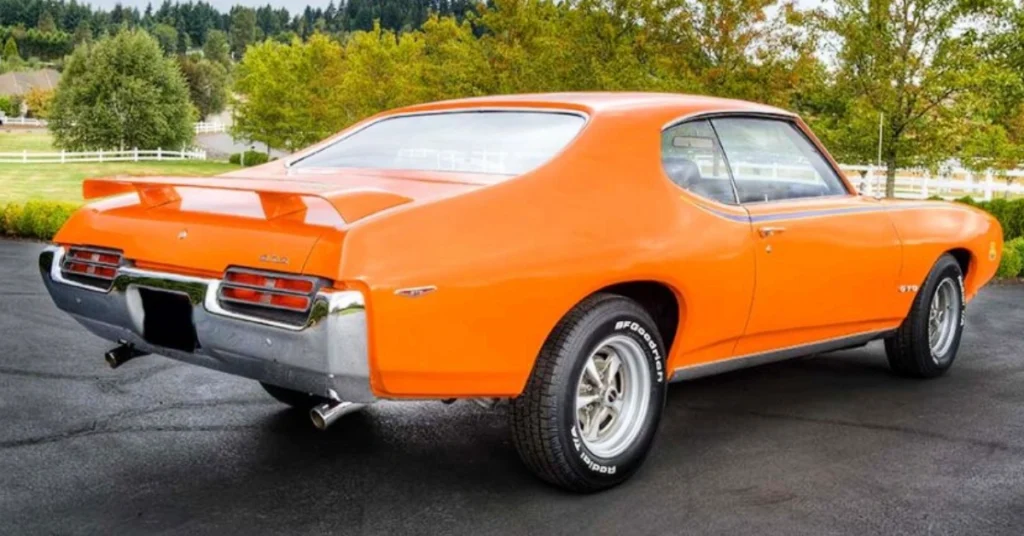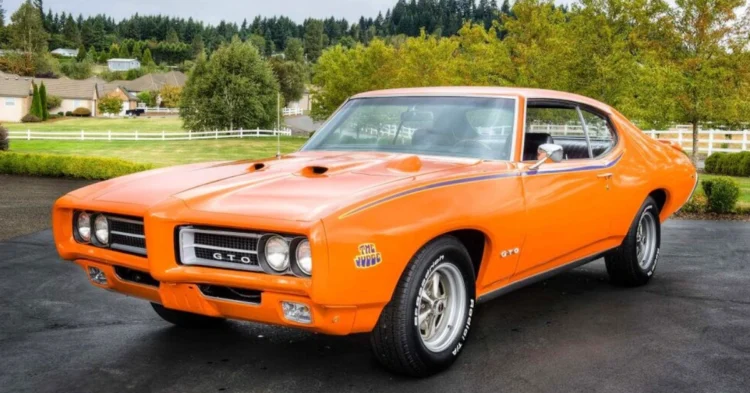The 1969 Pontiac GTO Judge Hardtop stands as a towering icon of the American muscle car era, a vehicle that combined raw power, eye-catching style, and a rebellious spirit to capture the hearts of enthusiasts. Introduced as an options package to revitalize the GTO’s flagging sales, “The Judge” transformed Pontiac’s mid-range performer into a cultural phenomenon, blending high-performance engineering with pop-art flair. Displayed at the Audrain Auto Museum, this classic embodies the peak of the muscle car craze, driven by its potent Ram Air V8 and distinctive design. This article explores the history, design, performance, cultural impact, and enduring legacy of the 1969 Pontiac GTO Judge Hardtop, revealing why it remains a legend in automotive history.
Table of Contents
The Birth of the 1969 Pontiac GTO Judge
A Response to Declining Sales
The Pontiac GTO, launched in 1964, is widely credited with sparking the muscle car revolution by pairing a powerful 389-cubic-inch V8 with the midsize Tempest platform. By 1968, however, the GTO had slipped into a mid-range status, overshadowed by competitors like the Plymouth Road Runner and Chevrolet Chevelle SS. To reverse this trend, Pontiac, under the guidance of John DeLorean, introduced “The Judge” as a $332 options package for the 1969 GTO, available on both hardtop and convertible models. Named after the popular “Here Comes the Judge” skit from Rowan & Martin’s Laugh-In, the package aimed to appeal to younger buyers with bold styling and performance upgrades.
The Judge was initially conceived as a budget-friendly GTO to compete with the affordable Road Runner, but it evolved into a premium offering, loaded with features that made it the best-equipped muscle car for the money. Despite its success, with 6,833 Judges produced out of 72,287 total GTOs in 1969, it only temporarily halted the model’s sales decline.
John DeLorean’s Vision
John DeLorean, a key figure in Pontiac’s performance legacy, played a pivotal role in the GTO’s creation and the development of The Judge. His vision to blend style, power, and marketing savvy transformed the GTO into a cultural icon. By borrowing the “GTO” name from Ferrari’s Gran Turismo Omologato and drawing inspiration from pop culture for The Judge, DeLorean ensured the car resonated with the youth market, cementing its place in muscle car history.
The 1970 Pontiac GTO Judge Ram Air IV: The Rarest and Most Exclusive Muscle Car of the 1970s
Jay Leno’s 1966 Dodge Coronet HEMI: The Bulletproof Classic Muscle Car That Fuels His Relaxation
The 1967 Dodge HEMI Coronet WO23: A Rare Muscle Car Masterpiece Roaring to Mecum Indy 2025
Design and Features of the 1969 GTO Judge Hardtop
Eye-Catching Exterior Styling
The 1969 Pontiac GTO Judge Hardtop was a visual standout, designed to turn heads with its aggressive, pop-art aesthetic. Initially offered only in Carousel Red (a bright orange hue shared with Chevrolet’s Hugger Orange), it later became available in other GTO colors like Goldenrod Yellow and Crystal Turquoise. The Judge package included distinctive features: a rear spoiler for subtle downforce, bold racing stripes, and prominent “The Judge” decals on the fenders and hood. A functional Ram Air hood with scoops, controlled by an underdash knob, and an optional hood-mounted tachometer added to its performance-oriented look.
The car retained the GTO’s semi-fastback styling, with a split grille, concealed headlamps, and a body-colored Endura front bumper, a GM innovation for low-speed impact resistance. Rally II wheels without trim rings, wrapped in wide G70x14 Polyglas tires, completed the Judge’s muscular stance, signaling its readiness for the street or strip.
Functional and Stylish Interior
Inside, the 1969 GTO Judge Hardtop was largely standard GTO fare, with the exception of Judge badges on the glovebox door. The cabin featured a three-pod instrument panel, black vinyl bucket seats, and a deluxe four-speed Hurst shifter with a T-handle, emphasizing performance. Optional gauges, including the hood tachometer, provided critical performance data, while the standard firm GTO suspension ensured a connected driving feel.
The interior was practical yet stylish, with a focus on driver engagement. Available options like power steering, power-assisted front disc brakes, and an AM/FM stereo added comfort, making the Judge versatile for both daily driving and high-performance runs.

Performance and Engineering
Potent Ram Air V8 Engines
The 1969 Pontiac GTO Judge Hardtop was powered by a 400-cubic-inch V8, available in two high-performance configurations:
- Ram Air III: Standard on The Judge, this 366-horsepower engine featured a four-barrel carburetor, high-flow heads, and Ram Air induction, delivering 445 pound-feet of torque at 3,600 rpm. It could propel the car from 0 to 60 mph in 5.2 seconds and through the quarter-mile in 13.8 seconds at 102 mph.
- Ram Air IV: An optional $390 upgrade, this 370-horsepower engine used a revolutionary cam design and high-flow exhaust manifolds, offering slightly more power but requiring over 3,000 rpm to shine. Only a small number of Judges were equipped with this engine, making them highly sought-after today.
The standard transmission was a three-speed manual with a Hurst T-handle shifter, though a four-speed manual or automatic was available. The car’s rear-wheel-drive system and Safe-T-Track limited-slip differential ensured optimal power delivery, making it a formidable competitor on the drag strip.
Handling and Dynamics
The 1969 GTO Judge was built for straight-line speed, with a firm suspension that provided stability during high-speed runs. Its high-performance suspension and wide tires offered decent handling for its 3,800-pound weight, though it was less agile than smaller pony cars like the Ford Mustang. The optional power-assisted front disc brakes improved stopping power, while the car’s balanced weight distribution and responsive steering made it a joy to drive, particularly on open roads.

Cultural Impact and Legacy
A Pop Culture Phenomenon
The 1969 Pontiac GTO Judge was more than a car—it was a cultural icon that captured the rebellious spirit of the late 1960s. Its vibrant styling and bold marketing, with slogans like “All rise for The Judge” and “The Judge can be bought,” resonated with young buyers, making it a symbol of freedom and power.
The Judge’s introduction at Riverside Raceway on December 8, 1968, alongside the Pontiac Firebird Trans Am, marked a high point for Pontiac’s performance legacy, showcasing its commitment to innovation and style. Despite its success, the muscle car era waned in the early 1970s due to emissions regulations, rising insurance costs, and the 1973 oil crisis, leading to The Judge’s discontinuation after 1971.
Collectibility and Value
The 1969 Pontiac GTO Judge Hardtop is a prized collector’s item, with its rarity and performance pedigree driving high demand. Of the 6,833 Judges produced in 1969, only 108 were convertibles, making hardtops more common but still highly valued. Hardtops with the Ram Air III engine typically range from $60,000 to $100,000, while Ram Air IV models can fetch $150,000 or more, with convertibles reaching up to $620,000 in mint condition. The Audrain Auto Museum’s example, with its Carousel Red finish and Ram Air III, is a pristine representation of this legacy, drawing crowds for its historical significance.

The GTO Judge’s Enduring Appeal
A Muscle Car Benchmark
The 1969 Pontiac GTO Judge Hardtop set a standard for muscle cars, blending raw power with bold aesthetics in a way that few competitors could match. Its influence can be seen in later performance models like the Dodge Viper and Chevrolet Camaro, which draw on the same formula of big-block V8s and aggressive styling. For collectors, it’s a tangible link to the muscle car era’s glory days; for enthusiasts, it’s a reminder of a time when performance ruled the road.
Lessons for Modern Automakers
The GTO Judge’s success underscores the value of combining performance, style, and cultural relevance. As automakers shift toward electric and autonomous vehicles, the 1969 GTO Judge reminds us of the emotional connection that powerful, driver-focused cars inspire, encouraging manufacturers to preserve the thrill of driving in future designs.
Conclusion
The 1969 Pontiac GTO Judge Hardtop is a muscle car legend that redefined American performance with its ferocious Ram Air V8, bold styling, and pop-culture swagger. From its vibrant Carousel Red exterior to its Hurst-shifted power, it embodies the untamed spirit of the late 1960s, a time when horsepower and attitude ruled. Whether displayed at the Audrain Auto Museum or roaring down the highway, The Judge remains an enduring symbol of Pontiac’s legacy, proving that some cars are born to rule the road forever.

